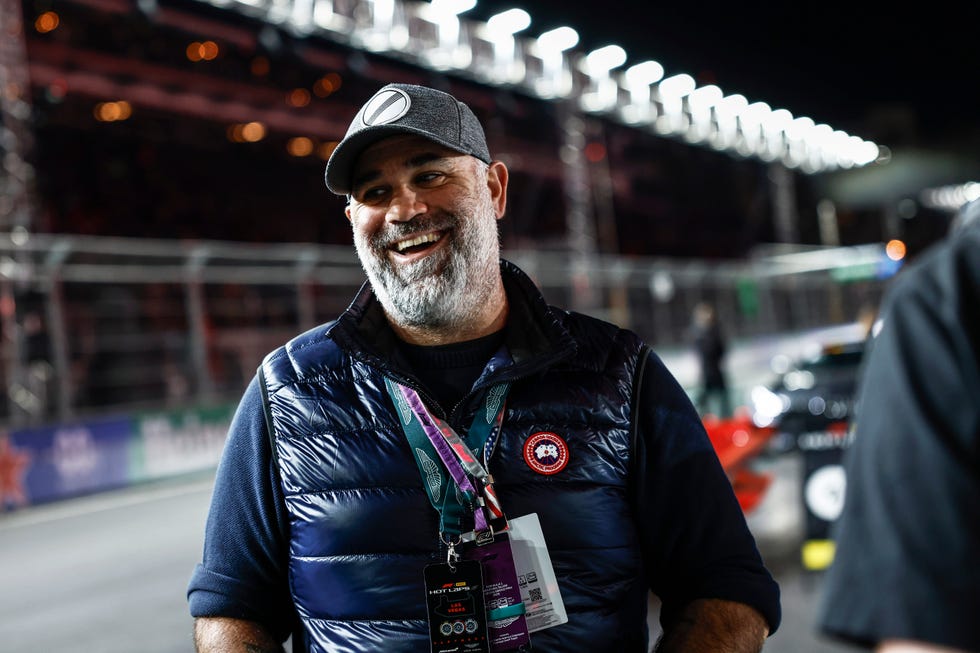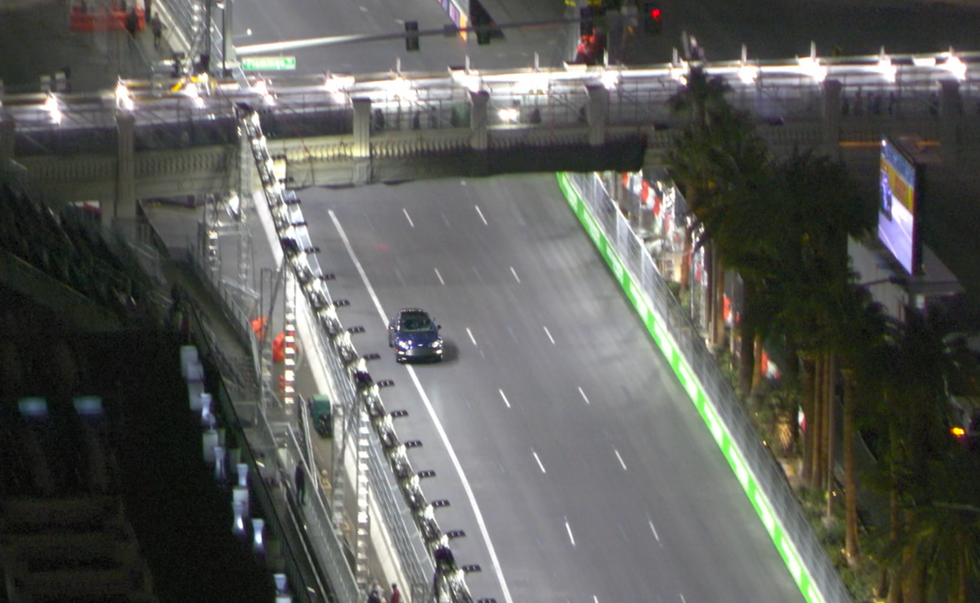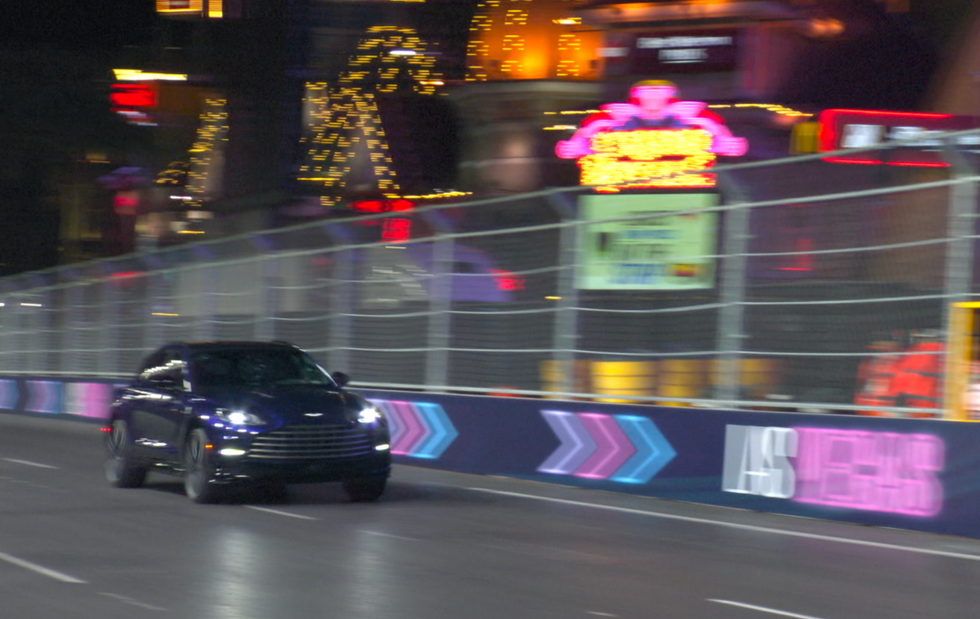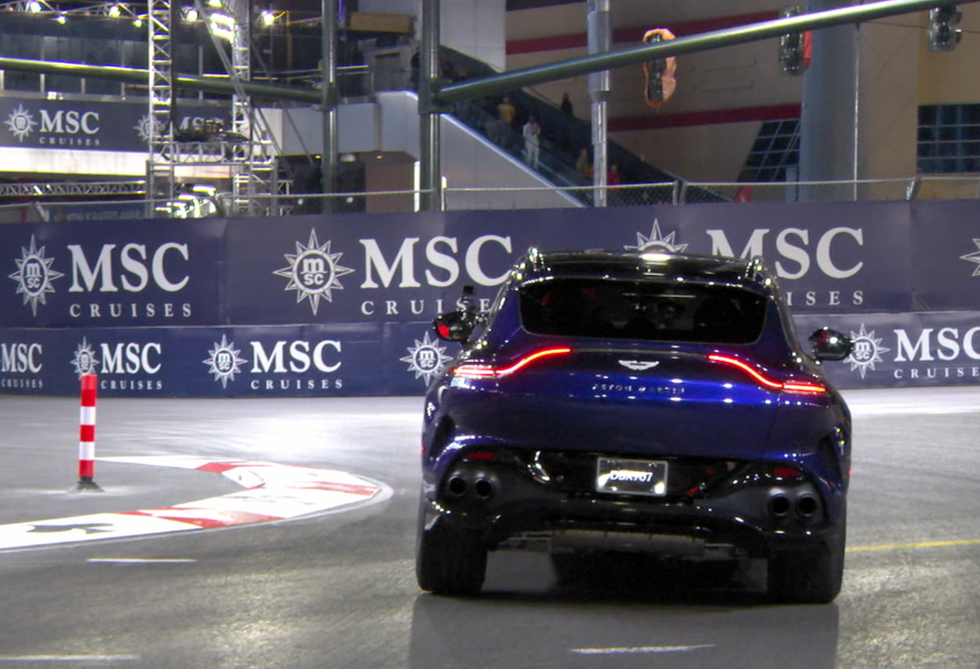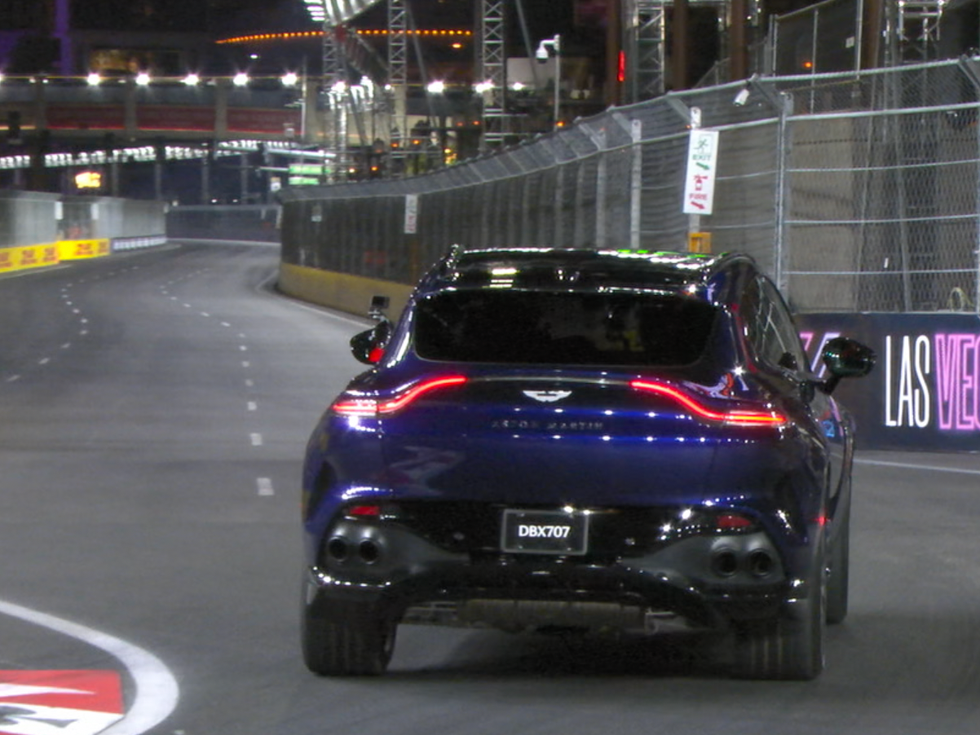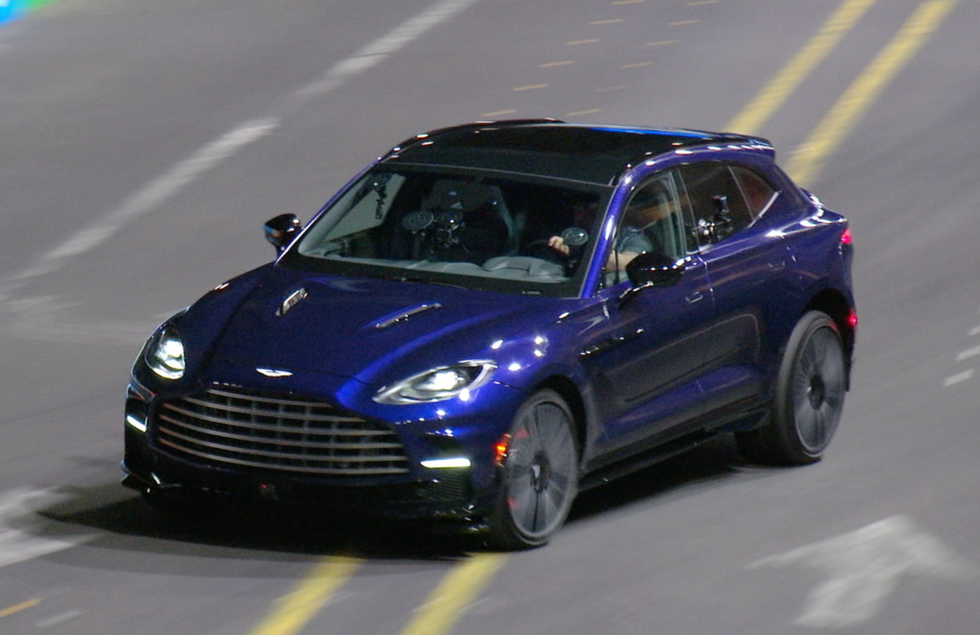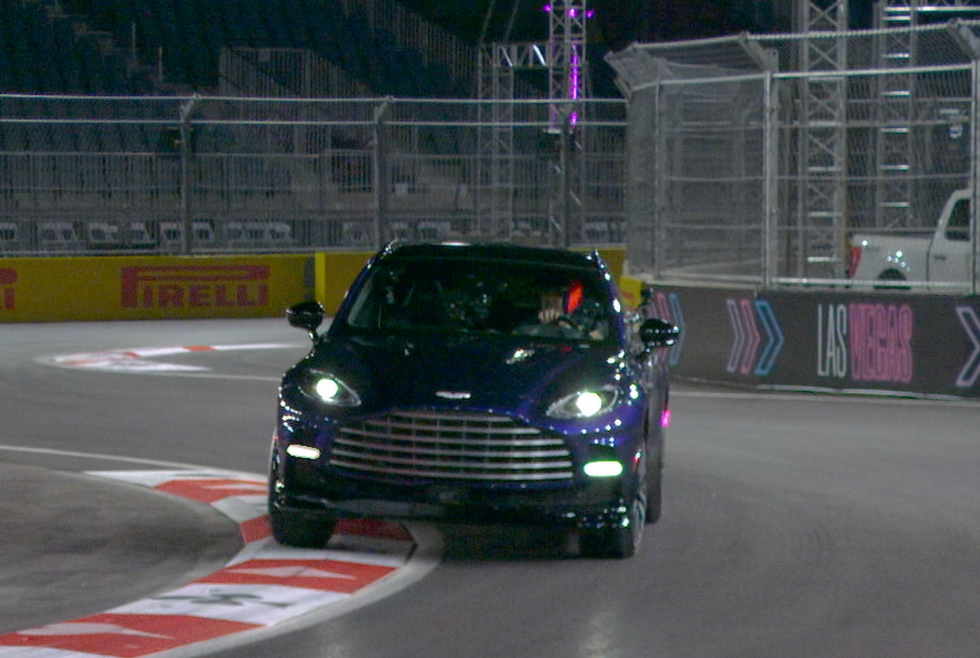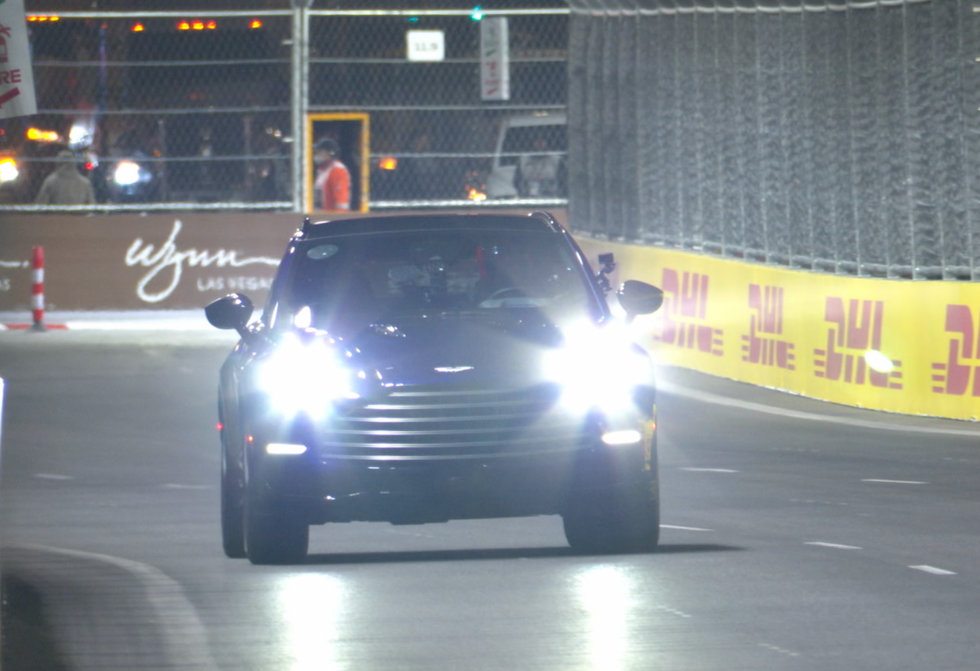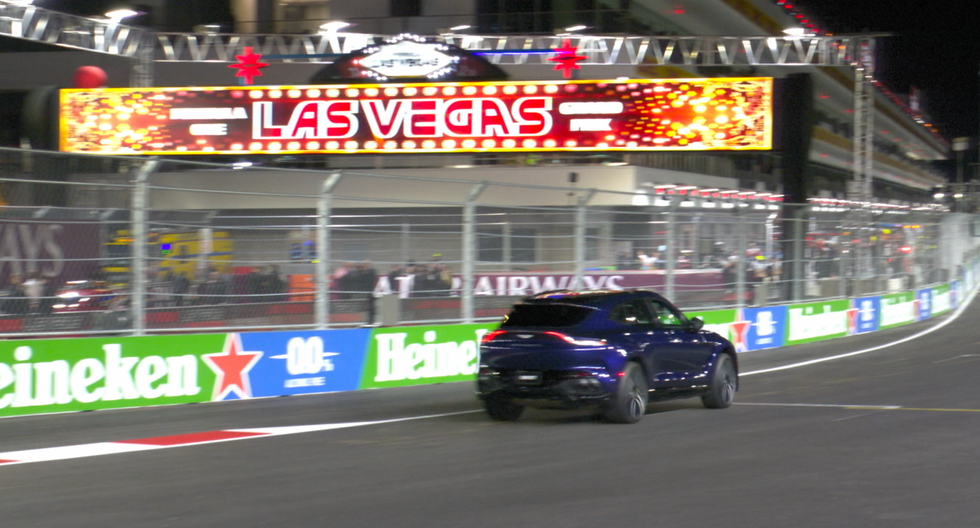Formula 1 has come to Las Vegas, in theory bringing the glitz, glamour, and revenue that a major global sporting event can bring to a city known primarily for wasting money on frivolous entertainment, shiny things, and sex, drugs, and crushed dreams.
Las Vegas’ street circuit has been the cause of much contention, making the lives of service industry workers deeply inconvenient for, in many cases, no extra pay, while disappointing tourists who’d hoped to see attractions on the strip whilst on vacation only to find scaffolding, blocked views, drained fountains, and nightmarish traffic even by Vegas standards. In fact, most places on the internet would have you believe that the Grand Prix of Las Vegas is a wholly bad thing, burdensome for many locals, and annoying to tourists for the benefit of a few already very rich people. And the track itself, aside from the cheeky card-suit curbings, looks like it could be any street circuit in any city in the world except when viewed from the perfect angle to get some type of glitzy landmark in the background.
All of those things can be true, and yet, for just six days, a three-and-three-quarter mile race track exists in a place it has never existed before, and will no longer exist by the time you read this article. If things go well, it will spring up perennially from the desert floor a week out of every year for the next decade, and perhaps longer. If things do not go well, then it may never exist again.
This, friends, is the kind of novelty that keeps me going.
I am not particularly interested in F1, or any real other motorsports league for that matter. This may seem odd, given my chosen profession, but the fact is that I’ve never much enjoyed watching other people do the things I enjoy doing myself. And I love driving cars on race tracks.
But it’s not just cars and racing. My preference for doing over spectating extends to nearly all other areas in my life, from sports down to simple, non-athletic tasks like video games or cooking. Can I drive a car as well as a professional? No more than I can cook a meal like Gordon Ramsay. But I’d still rather be doing my best than watching the best, even if the person I’m watching is a legend. I liked the first two seasons of Drive to Survive because they interested me in the characters of mid-pack F1 drivers that didn’t get major TV coverage. But was I inspired to start watching the races? Ultimately, not so much. Netflix’s crafted “documentary” series was more entertaining than the actual sport. And even if you like racing, and care about racing in a way I do not, all motorsports are better on television anyway.
This is why I’ve turned down manufacturer invites every single year this decade to see a Grand Prix, until this year, in Las Vegas. That’s because Aston Martin wasn’t just inviting me to the race–I would get to drive the track. That got my full attention.
My stipulations were straightforward: no parade laps, no lead/follow laps. I wanted a real go, at my own pace, whatever that pace might be. And in fact, because I agreed to interview Swizz Beatz for a Road & Track-sponsored car show back in L.A. on Sunday morning, I wouldn’t even be staying for the race itself.
The kind folks at Aston Martin agreed. I would be one of just three amateurs who got to drive the track at pace for its entire, temporary existence. Everyone else who got to do this was either literally racing F1 or a paid full-time hot-shoe like Tony Kanaan, Alex Rossi or Tanner Foust, who gave ride-alongs to VIPs and fans, and then just… us.
At 1:15 a.m. Saturday morning, immediately after qualifying.
I would get a 10-minute session in the DBX 707, Aston’s Super-SUV. Obviously an SUV, even a “super” one, is sub-optimal for track work, I happen to like the DBX 707 very much; it is fast, responsive, and very pretty. Frankly, it was more than enough car to satisfy my curiosity for this particular occasion.
I would mount six cameras on the car, as well as my audio gear for narration. I would have to make sure it’s all ready and going because I’d only get one crack at it. The FIA was kind enough to capture external footage of our laps, which they would share as long as I’d say “Formula 1 On-Track Images are Copyright of Formula One Championship Limited, 2023” (Same goes for some of the images in this article).
This is, what I might call, a high-pressure situation. I don’t normally have to learn race tracks in front of an audience of thousands, in real-time, while making a video for my YouTube channel in which tens or hundreds of thousands of people will analyze every imperfection of my driving, in a borrowed $350,000 vehicle, and on a track with brand new, slippery tarmac and zero runoff.
In order to prepare, I went to CXC Simulations in Hawthorne, CA. They build and sell those crazy five and six figure full-motion simulators for home and commercial use, and allowed me to get some seat time on a rendered version of the Las Vegas track, a “mod” for Assetto Corsa. Mods are like crowdsourced environments for the game. In this case, the Las Vegas circuit was created based on the published track map and by scouring the internet for construction photos and other bits of publicly available information. They set me up in the correct car behind a wild, eight-foot-tall spherical screen and I began to learn the lines – far more challenging than expected. Many of the corners are blind. As with other street circuits, the walls block off many trackside points that could be used as visual aids. And the simulator lacked any of the numbered braking markers which made judging braking distances beyond difficult, particularly on the comically long main straight. Twenty minutes in, I was no longer crashing. Forty minutes in, the lines started to look reasonably clean. After 60 minutes, I was having fun and just wanted to keep going. After an hour and a half, I was confident I could not just get around the track that was literally not built yet, but actually do well.
As it turns out, the track, which looks simple on a map, is anything but. I thought I learned this on the sim, but I really learned it when I got a single ride-along lap with Aston Martin factory hot shoe Darren Turner in the DBX 707.
Whatever confidence I had in myself to do well pretty much vanished in those three minutes.
There is a ton of nuance, much more so in reality than in a video game. And also, the visual cues of where to do what and when are totally different in real life. There are brake markers, thank god, but they are mostly useless for a car that needs to brake far earlier than any F1 car would. Turns 2, 3, and 4 are all very late apexes with narrow exits. Turn 5, the 90-degree right-hander at the end of a long straight, involves braking from well over 100 mph for a corner you literally can’t see until you’re less than 50 yards away. The left-hand hairpin turn 7 sneaks up on you out of nowhere, the track width after turn 9 is about six feet narrower than in the game, and I still can’t figure out the right place to put my car through the turn 10/11 complex. The 1.2-mile (!!) straightaway is simple, until you try to figure out where to brake from VMAX to about 40 mph without dying, because unlike the sim, there is now a wall RIGHT ON the exit of turn 14. Turn 17, the fast kink onto the main straight, could be taken nearly flat in the sim (and is a 200 mph corner in an F1 car) but in a DBX, requires heavy braking, and the visibility through that corner is basically zero until you’re on it.
I had just that one lap riding with Darren to learn all new visual cues before trying it myself and trying to kinda look like I knew what I was doing. Here’s the new information I had to learn and process based on that one lap.
Brake for turn 1 at the 200 board. (F1 cars brake at the 50.)
Exit turn 4 by driving under the “LAS VEGAS” on the pink sign on the bridge.
Brake for turn 5 at the last blue marker, 50 yards before the “200” sign on the left. Don’t. Turn in until you can read the third “Las Vegas” sign on the outside exit wall.
Keep it neat on the exit of 9, the wall is painted black and comes at you real fast.
Stay to the center of turn 10 and then apexing late for 11, because the wall on the outside of 12 didn’t exist in the sim either and is sitting on the outside curbing.
When the left fencing towards the end of the straightaway turns green, look up for your braking marker: a traffic light covered in black burlap. Be right when you hit the brakes at the second traffic light.
As soon as you can read “KOVAL” on the overhead sign, hit the brakes, then turn in for 17 when you get to the sign itself.
It sounds a little more simple than it is, particularly because I had to memorize it in real-time.
By the time qualifying started, at midnight local time, I had been awake for eighteen hours, having woken up at 5:30 a.m. in LA, sold a motorcycle before breakfast, and driven to Vegas. I had a 16-ounce cold brew at 8 p.m. and was already past the sweating phase. Being sober in Vegas at midnight is an odd feeling, particularly when caffeine is fighting tiredness, which is side-questing against adrenaline and fear.
At 12:50, as qualifying ended, we moved the three DBXs into position on the outside of the track at turn 12 and waited for the Marshalls to open the gates to go in. We were told we would be let in at 1:05, but we sat there idling on icy cold tires until 1:15. At least we’d get a second look at the braking point on the straightway and turn 17 as we made our way around to the Start/Finish line.
The actual 10 minutes of lapping went by, as expected, too fast. The first lap was just about programming my hands and feet in order to separate my brain for talking, while also figuring out how much, or how little grip existed on the brand-new track. You’d know if you went off line, because the F1 cars had laid down enough rubber to give it some tack, but anywhere else it was like being on ice, something I learned on the very first corner while getting massive, accidental oversteer at just 40 mph, which put the fear of God into me. I still hit 168 on the front straight, surprised at the undulations of the track that only present themselves at very high speeds.
By the second lap, I knew where to place the car, but was braking far too early for turns 7 and 12, both of which come up quickly from behind walls to the left. Better early than late, I suppose. My confidence was improving, fear declining, and I hit the stop pedal in the recommended place, under the covered traffic light, but slowed faster than expected for turn 14. The Aston PR folks would note that as I passed Start/Finish for my final lap, my carbon ceramic rotors were glowing bright red.
On the last lap, I started to put it all together. My tires had enough heat to provide some confidence, plus I was putting the car in the right place to take advantage of the leftover F1 rubber. I still hit the brakes too early in turns 7 and 12, but wanted to see a big number on the dash down the end of the main straight, so I committed. Having walked the length of the strip in the past, and remembering how far apart those casinos are and how huge they are, they flew by at an astonishing clip. A casino, or more, every second. How do you appreciate a street circuit in Las Vegas? You look up at what’s passing you by, and at what pace.
I held it down to the floorboard just half a second longer and hit the brakes at one hundred seventy-three miles an hour – on Las Vegas Blvd, a street that normally sees traffic crawl along at a snail’s pace. I still made the corner, although I doubted the DBX’s stopping power for just a moment. It was over, but my kingdom for 20 more minutes on track. I was just getting the hang of it and now it was over! I had personal bests to break!
Coming back to the starting line, my brakes were positively smoking. A considerate driver, in their own car, with just a few minutes to spare on track, would have done a cool-down lap to prevent thousands in premature brake damage. I offered, but they said no. We would have to leave the track immediately so that the hardworking marshalls, film crew, and everyone else who earns a living keeping this thing going could get to bed. It was nearly 2 AM and the race was in eighteen hours. High on adrenaline, vehicles safely parked for the evening, we hit the lobby bar, the Aston PR team appreciative that I didn’t bend their metal, and me appreciative for the experience.
I didn’t watch the race, but based on my social media feeds, it seems like most everyone who attended had a good time. Aside from the “manhole cover mishap,” an infrastructure oversight that happens one way or another nearly every time a brand new track is constructed, the city seems to have had a mostly drama-free event. Yes, there was a crazy amount of hype, an overpriced ticket and package bubble that all-but-popped in the weeks before the event, but the grandstands were full on race day, and the hotels I saw were packed with people partying in team-adjacent gear. In due time we may learn how much they all made, or lost, in the process, and whether it’s worth inconveniencing the locals and tourists for nine more years – maybe they can keep racing and inconvenience them less?
My suggestion: let the locals have a track day. Get them involved in a way that makes them appreciate what’s been done, rather than cast it off as a nuisance or a moneymaking scheme of which they do not get to partake. If they are anything like me, they may not appreciate something by watching others use it – but they just might appreciate it by getting a taste for themselves.
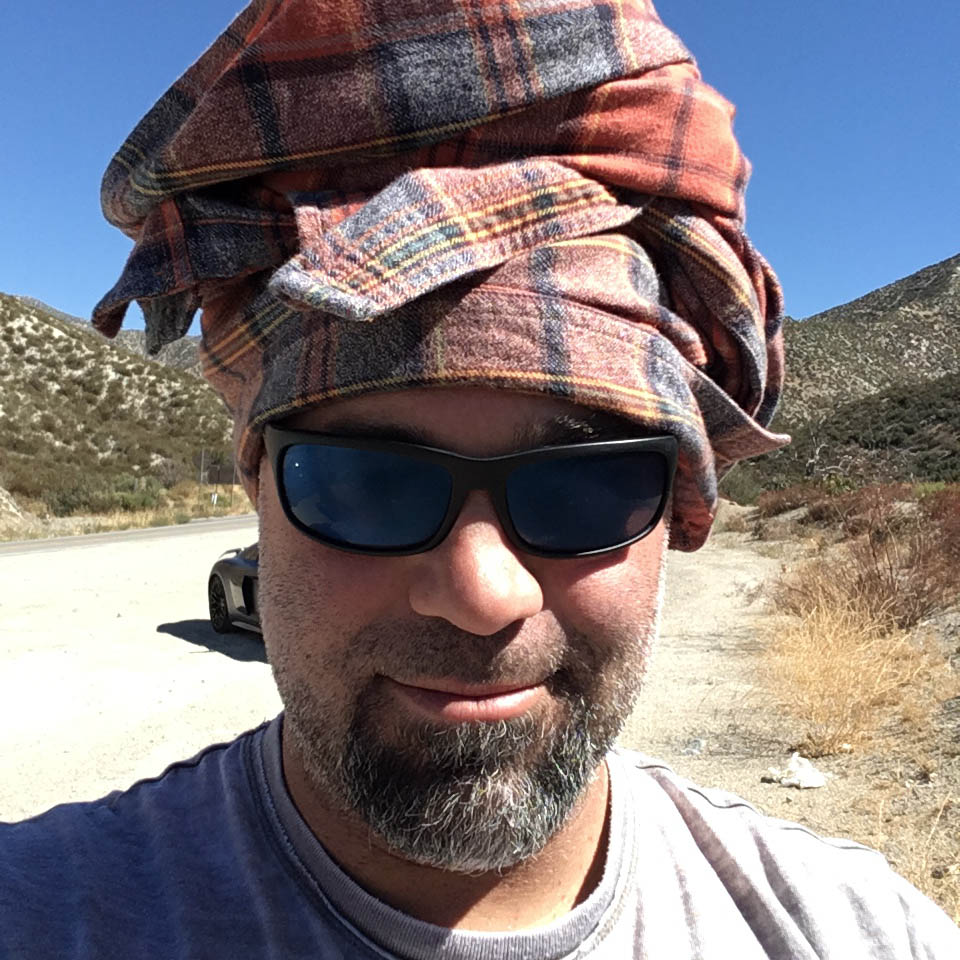
Matt Farah is a lifelong car enthusiast who began his automotive career at dealerships, rental agencies, and detail shops before discovering the power of YouTube in 2006, with his channel The Smoking Tire. Farah has a Bachelors of Fine Arts from the University of Pennsylvania, with a concentration in Photography, helping not only create YouTube content but also providing his own photography for his Editor-at-Large position at Road & Track.
He has hosted and produced television series on NBC Sports, G4 Network, SPEED, and Esquire. The Smoking Tire Podcast is #1 in the category every week of the year. Now at 800+ episodes, The Smoking Tire podcast is the definitive guest stop for who’s who in the auto industry. Farah’s Westside Collector Car Storage is a game-changer in luxury, concierge parking that expanded to a second location in 2023.

